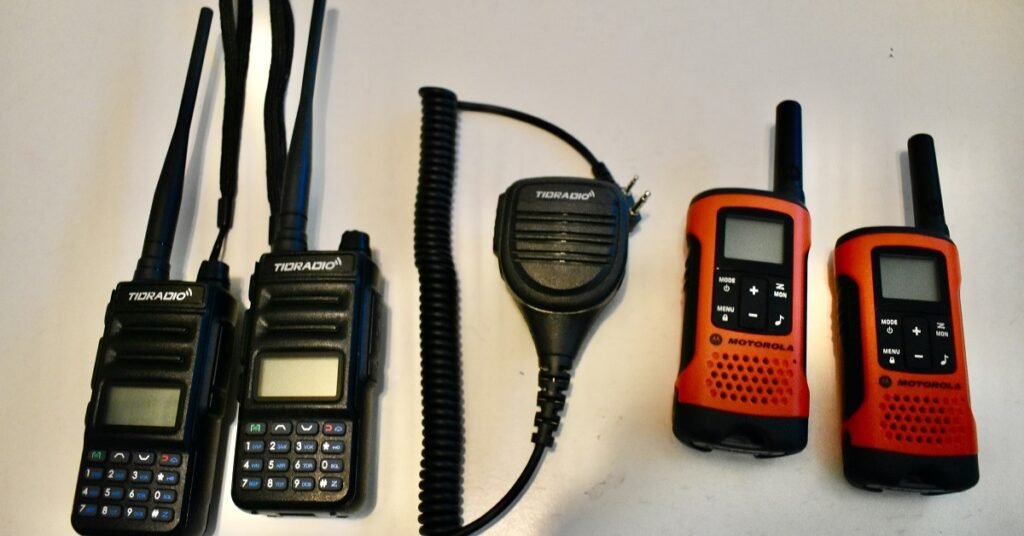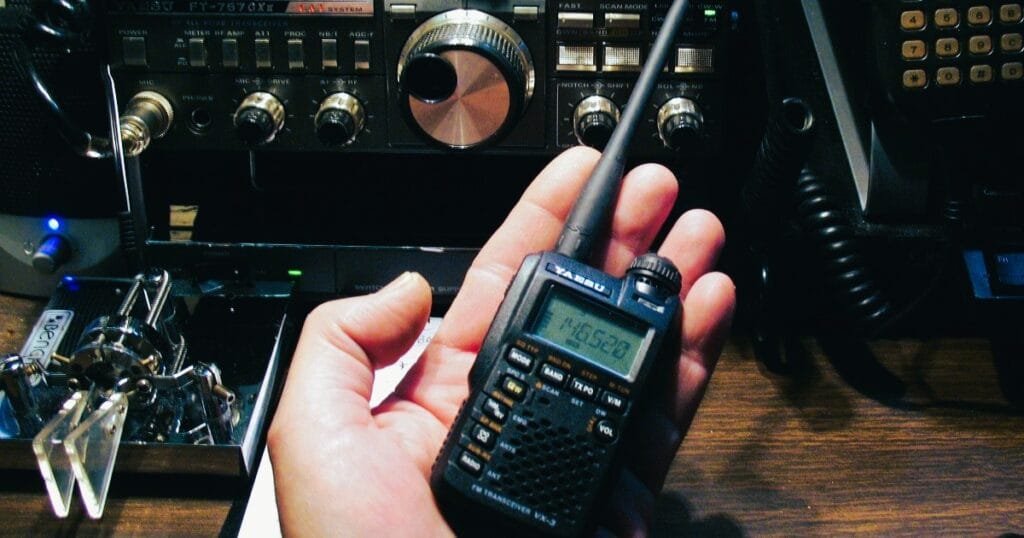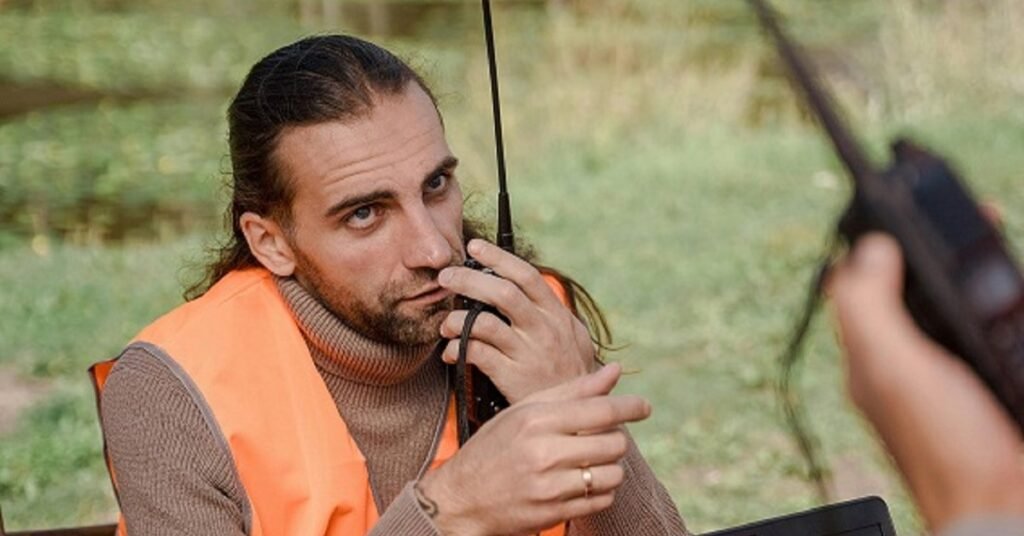Table of Contents
ToggleWhich Should You Use, VHF or UHF? How To Pick The Right One?
When someone asks me which walkie-talkie I will pick from VHF and UHF. It will be a very hard decision to pick one. Is it for a more cheerful urbanite or something to better handle dirt and debris? When we start talking about walkie-talkie or you can say handheld wireless communication device, not talking about CB radio; the first question arises is which one to take? VHF of UHF walkie talkie? I can still remember about my seventh birthday and getting my first FRS tiny walkie talkie. My uncle, who is a ham radio operator, gave me this interesting device as my birthday gift. And he used to talk with me with his CB radio. This was a miracle for me. After that I used lots of different devices and faced a lot of issues and resolved many of them and am still working. Remember a handheld radio can also cause confusion if you don’t handle it correctly. No worries, this is where we come in to simplify things. We will touch on some fun, explain the differences in VHF and UHF walkie-talkies, and help you decide what is right for your needs. Dotted about this piece are tips on how to make your way through the concrete jungle or the real one to help you along your journey.
VHF and UHF Explained in Layman Terms
For getting more information it’s important to know the basics of ham radio frequencies. In radio terms Very High Frequency is called VHF and Ultra High Frequency is called UHF in short. These two are the most used frequencies in the world of ham radio. If you know about the wavelength. You see, the VHF frequencies can fly from 30 to 300 MHz. On the other hand, UHF frequencies can comply between 300 MHz to 3 GHz. But why does this matter?
It is the marathon runner of radio — slow but good for long range. UHF is the sprinter, quick and agile, but not able to last long in terms of range. Getting to know these differences is important when picking the perfect walkie talkie for your next trip.
Now we break it down a bit further.
UHF Walkie-Talkies: The City Slicker’s Best Friend
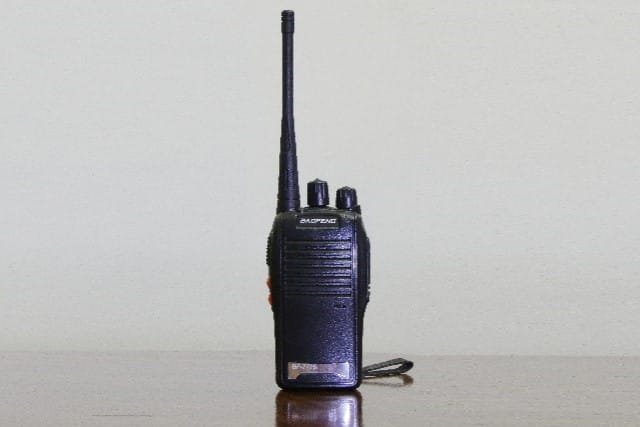
Things to carry being a UHF walkie-talkie, in case your life is a scene from urban survival. The UHF is known for shorter wavelengths that can go through walls, buildings on city blocks with lots of people. UHF Walkie Talkie are the best solution required for hotel operations, construction sites and in a busy retail environment.
The Superiority of UHF Walkie-Talkies in Urban Settings
Better Obstacle Penetration: UHF signals pass easily through obstacles like trees and walls, which makes them some of the best for locations with a lot of interference.
Higher Frequency Provides More Channels And Less Interference: This system gives you more channels to use which means less competition between users in the same area as one another.
Shorter antennas: exploit that the UHF waves have short wavelength, and consequently you can use an antenna easier to build which is smaller. You do not have to carry around a giant antenna as it would be an extra job.
Disadvantages of UHF Radios
Then, again, there are a few oddities to UHF walkie-talkies — just about everything that breezes up being extraordinary will have its bizarre eccentricities.
Limited Range: UHF Radios don’t work very well on long distances, however they are great at penetrating terrain. This may not be the best option if you are going to have your communication far away.
Battery Drain: After all that obstacle-busting power, your battery takes the hit. UHF radios consume more power than VHF series because of their wavelength nature. Thats why, if you are using UHF band radios, you have to recharge them more often than VHF radios.
UHF might Interference: No matter how many channels you may have, UHF always can interfere with other devices. Have you ever tried carrying a conversation with 7 toddlers in the room? Sometimes it certainly feels that way. Doesn’t it?
The Trusty Sidekick of the Outdoorsman: VHF Walkie-Talkies
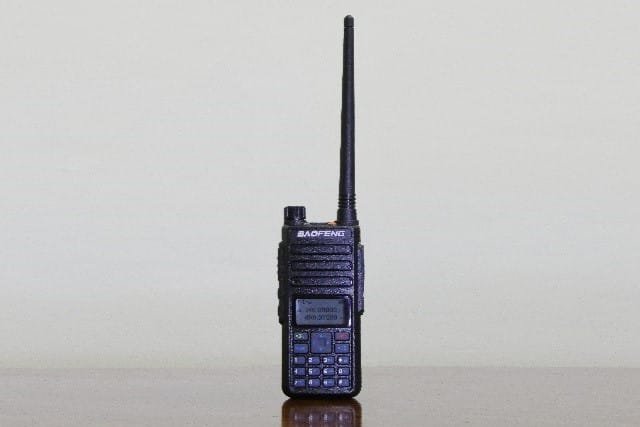
Here is a short discussion on VHF. Ahh, the great outdoors — wide open spaces to roam as you please rather than a corporate structure… If that sounds like your idea of paradise then VHF walkie-talkies are about to become your new best friend. Longer wavelengths allow VHF radios to reach out to longer distances. They are also suitable for long -range communication i.e., whether you belong to a forest or travel a large distance.
Why VHF Walkie Talkies Are Great Outdoor Devices
Greater Range: VHF (Very High Frequency) radios transmit over longer distances, making them ideal for long-distance communication. Great for a fleet or night on the town.
Long battery life: VHF radios are usually the marathoners, who eat their energy. Longer battery life and more power efficient to be good for long trips.
Better Ground Cover: Since VHF signals do not prefer the higher areas, this is very beneficial for activities that take place outdoors. VHF radios may be used for a range of applications from farm management to marathon running.
Disadvantages of VHF Radios
However, VHF radios are not without their limitations:
Greater Land Reach, but Less Obstacle Avoidance: VHF transmissions will penetrate the earth and its stratosphere further, however is less effective at avoiding obstacles. Your VHF Radio May Reinforce Monuments, Heavy Vegetation or Urban Areas
Less Channels: As there are fewer VHF frequency bands, we have a lesser number of channel variants. This could mean less room on the radio, more interference when other ham radio groups are operating. If everyone is trying to communicate at the same time, you end up screaming into a void.
Longer Range Antennas: Longer antennas are necessary for VHF radio transmission services. This can be a hassle when you need to keep things small and portable.
Read More — Ham Radio Frequency Chart Click here.
Where Should You Use VHF and UHF Walkie-Talkies?
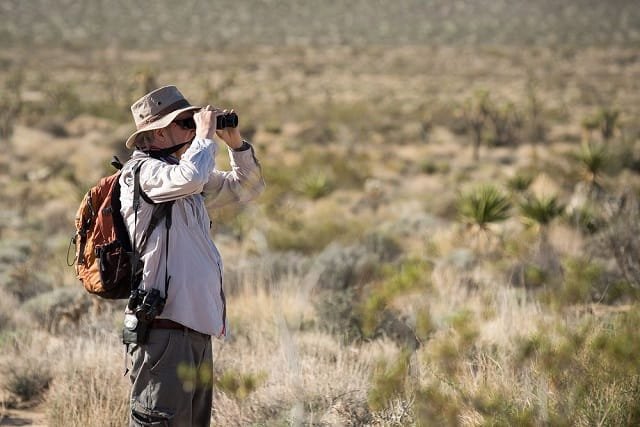
Having examined the pros and cons of VHF and UHF, here is where each performance packs more punch. Additionally, you may additionally plan to exercise one-of-a-kind spectrum which will help you determine what is the great radio frequency for your personal use. No one wants to get caught with the wrong walkie-talkie in an uncomfortable situation, after all. (Trust me; I’ve been there.)
Urban and Indoor Champions: UHF Walkie-Talkies
Construction Sites — UHF radios are the best option for areas with more obstructions like at building construction sites. Think of them as the ultimate navigating unit in complex organizations
Hotels and boutiques — If you are managing a hotel or retail space, UHF radios significantly benefit when you need to communicate with the team over several floors.
Educational – Schools and colleges may have a lot of buildings and too much interference. UHF walkie-talkies are a great way to make sure that your talk is clear and loud.
VHF Walkie-Talkies: Heroes at Long Ranges
Long Distance Trucker: Whenever you drive long distances, the VHF walkie-talkies are the best to ensure you can help each other out.
Public Safety Initiatives: VHF radios are used for greater range, to coordinate more efficiently, when working in a large rural area.
Recreational Activities: If you do outdoor activities more often like hiking, camping, group tour in a remote area where there is no cell phone network coverage. And you need to cover a maximum area for wireless communication. VHF radios can be just perfect for you.
What is Better, VHF or UHF for Ham Radio?
Now that you have learned where VHF and UHF do their thing, how about thinking which is best for your ham radio exploits. I love ham radio and have often wondered whether VHF or UHF is better suited to ham radio operations. Want your wearables to be meticulously accurate and have the battery life to back it up, or just allow you a quick glance at whatever?
When is The VHF Option in Ham Radio the Best Choice
Type of Contact: If You Love Long-Distance Contacts — VHF radios are great for long-distance connections, especially when you’re in an open space. If you are doing field day events or just wanting to talk to hams farther than locally, VHF may be the increased range you seek.
If You Like Simplex Communication: In some areas, VHF frequencies are often used less than UHF in a frequency range that allows for easier and more localized cockpit (direct radio-to-radio contact). When in a low radioactivity zone like this, it can make for a hefty bonus.
UHF for Ham Radio: When is it the Right Choice
If It Feels Like You Always Need Prayers To Get Through That New Single track, UHF Radios Only work well in urban heaps with many buildings. UHF is what you want if your ham radio exploits are in cities or other areas where there are lots of buildings and stuff.
More Repeater Options If you live in a city there may be many UHF repeaters available to you, allowing for increased coverage and more ways to extend your range. This could be a total game changer if you work in cities where direct contact is cumbersome.
Behind the Great VHF/UHF Debate: My Perspective
I now have a great appreciation for both VHF and UHF walkie talkies, after many years of using them. This is my old VHF radio that I always carry on treks and use while managing outdoor events. It’s reliable, long ranged, and keeps me connected when I’m hundreds of miles from the nearest cell tower.
During the city, though, I use UHF walkie-talkies. They slice through buildings like a hot knife through butter, and the shorter (and run-of-the-mill) antenna makes it easier to ferry around without looking like I am preparing for a space mission.
In the end, it boils down to whatever is best for your needs as well as your environment VHF or UHF. So you have to travel long-distance on highways? VHF has your back. Urban jungles where you work are obstacles? UHF is your best option.
Don’t know which frequency you’re using? Don’t panic. Click here to find out how to identify your frequency.
Conclusion: Battle of the Walkie-Talkies VHF vs UHF
The choice in between VHF and UHF walkie-talkies comes to your very own demands, as well as area. But in this study on ham radios, we have walked you through both the pros and cons of each type. For negotiating the urban jungle, UHF radios that are able to penetrate obstacles will be of great use. Yet if your adventures take you into wide-open spaces, VHF walkie-talkies are the only solution for communicating over really long distances.
Either way, VHF and UHF radios are handy tools in your communications landfill. Choose the one that is right for you, charge up those batteries and stay connected wherever life may take you. Because, after all that is the beauty of a fine walkie-talkie is not it… sometimes just one push of a button away from spending your next beautiful talk.
For more ham radio reviews, troubleshooting tips and fixes, of course you can search our Fix Doctor section.
